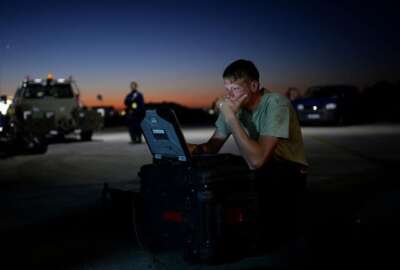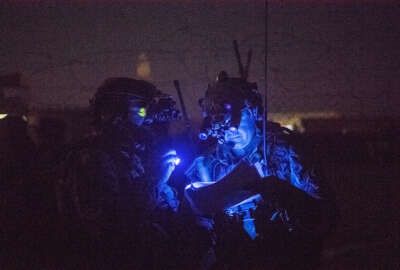TALOS exoskeleton presents technological, acquisition hurdles for SOCOM
It will take more than new technology to create a force of real-life Tony Starks. Improved acquisition is also key.
The Tactical Assault Light Operator Suit (TALOS) is a top research and development priority for U.S. Special Operations Command (SOCOM). But, putting Special Operations individuals in “Iron Man” exoskeletons presents many technological and acquisition challenges for the command.
“What we’re really most interested in is enabling the individual operator,” said James Smith, acquisition executive at SOCOM, during his presentation at the National Defense Industrial Association’s annual Special Operations International Conference in Tampa last month. “That’s our focus. That’s really what’s peculiar about SOF (Special Operations Force) … how much capability we provide to the individual operator.”
The exoskeleton encapsulates SOCOM’s focus on empowering the individual warrior to complete the mission at hand.
“The operator is our platform, and I think that’s a powerful statement,” Smith said. “It’s everything about increasing survivability, increasing the lethality, increasing their situational awareness and increasing their ability to partner with international folks. That’s where we’re focused. … The real challenge has to do with you put a world class athlete into a powered exoskeleton, that’s going to be a very difficult technology challenge. We’re realizing a lot of those challenges.”
Related Stories
“Those teams need to be able to prevail in all scenarios against all threats,” Smith said. “So you know, how successful those teams have been in the last 17 years in the engagements that we’ve asked them to engage in, how successful are they and how successful can we help them be in the future battlefields that we may face in the very near future? They need to prevail, they need to be indomitable.”
Those teams are supported by SOF peculiar equipment ranging from submersibles to satellites and, of course, the TALOS program.
“Right around this time next year, we’re going to put an operator into a powered exoskeleton and leading the DoD really on learning what that really means to operations and what’s the art of the possible,” Smith said. “In parallel and in combination with that, we’ve learned a lot through that Tactical Assault Light Operator Suit effort, about providing greater situational awareness to the individual operator and about providing greater lethality.”
At the conference, Smith talked about some of the acquisition strategies SOCOM is using to obtain what are sometimes unusual requirements. Earlier in the month, SOCOM received authority to use grants to do just that.
“We’ve done grants before, but they were through a third party entity,” Smith said. “With the typical cost and schedule impact, we now can do that directly with you. So we want to roll that authority out, partnership, intermediary agreements.”
SOCOM is spending a lot of time thinking of others ways to streamline its acquisition strategies. Smith challenged his audience to help the command improve.
“If you think we’re slow on schedule, challenge to sign it and then be prepared when we ask you why it’s so long for us to negotiate a contract, et cetera” he said. “Tempo is an important part of our business here, and it’s one of our things that separates us, I think, from maybe traditional acquisition.”
Copyright © 2025 Federal News Network. All rights reserved. This website is not intended for users located within the European Economic Area.
Michael O’Connell is senior digital editor of Federal News Network optimizing content for the best user experience. Follow @moconnellWFED
Follow @moconnellWFED





